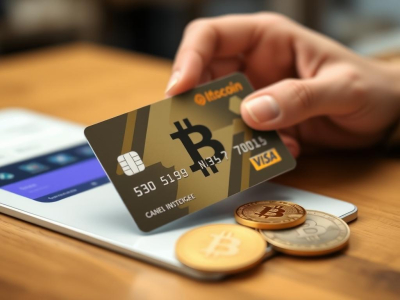
For anyone utilizing a crypto card, grasping the fee structure is non-negotiable. Transactions can carry significant costs that vary widely based on usage and the specific services provided by the card issuer. Always check for hidden fees associated with international payments or currency conversions; these can erode your cryptocurrency gains.
Different cards cater to various needs, from everyday purchases to investment transactions. Understanding how each card calculates its fees will empower users to select the most cost-effective option tailored to their payment habits. Examine transaction fees, monthly maintenance charges, and any additional costs tied to premium features.
Monitoring your spending across different platforms can reveal patterns in your usage that help you avoid unnecessary expenses. Utilize tools available through many crypto card providers to track your transactions and assess where you might save on fees. An informed approach allows better management of both crypto assets and associated costs.
Transaction Fees Explained
Transaction fees are a critical aspect of using crypto cards for payments. Understanding how these fees work can significantly affect your overall costs.
- Flat Fees: Some providers charge a fixed fee per transaction, regardless of the amount. This structure is straightforward but may not be economical for small transactions.
- Percentage-Based Fees: Other services apply a percentage of the transaction amount as a fee. This can become costly on larger payments, so consider this when selecting a provider.
- Dynamic Fees: Certain platforms adjust fees based on network congestion or demand. Monitor these fluctuations to optimize your expenses during peak times.
When choosing a crypto card, review the fee structure in detail:
- Compare Providers: Not all providers offer the same fee structures. Evaluate multiple options to find one that aligns with your usage patterns.
- Consider Additional Costs: Beyond transaction fees, assess potential charges for currency conversion and ATM withdrawals to avoid unexpected expenses.
- Review Transaction Limits: Some cards impose limits on transaction amounts which may lead to higher costs if you exceed them frequently.
A clear understanding of these factors can help you manage costs effectively while utilizing crypto cards for various payment scenarios.
Monthly Maintenance Charges
Monthly maintenance charges for crypto cards vary significantly among providers, influencing the overall costs of using these services. Typically, these fees cover account management, access to customer support, and platform updates.
Providers may implement different pricing structures. Some charge a flat fee each month, while others tie fees to account activity or balance thresholds. For instance, a card that offers premium features might have a higher monthly fee compared to basic options.
When evaluating these charges, consider the benefits associated with the card. If frequent transactions or high-value payments are expected, a card with a reasonable maintenance fee may be more economical in the long run. Conversely, low-maintenance cost cards might lack essential services that could incur additional fees elsewhere.
Understanding these monthly charges is crucial for budgeting purposes. Always review terms before committing to ensure transparency regarding any potential hidden costs linked to your usage patterns.
Lastly, keep an eye on promotional offers; some providers waive monthly fees for initial periods or if certain spending criteria are met. Such incentives can significantly impact your overall expenses related to crypto transactions.
Cross-Border Transaction Costs
For cost-effective cross-border payments, assess the fee structures provided by different crypto services. Many providers charge variable fees based on transaction size and destination, which can significantly impact total costs.
Transaction fees for cross-border transfers often include a network fee, which varies by blockchain congestion, and an exchange rate margin if currency conversion is involved. Be aware that some platforms offer competitive rates but may have hidden charges that inflate overall expenses.
Comparing providers is essential; some may impose higher upfront fees while offering lower ongoing costs. Evaluate the total expense for frequent usage versus occasional payments to determine the most economical option for your needs.
Utilizing stablecoins can reduce volatility-related costs during cross-border transactions. However, verify whether your chosen provider supports them and at what fees.
Lastly, consider the transaction speed alongside costs. Some services may offer expedited processing for an additional fee, which could be justifiable in urgent situations but detrimental in terms of overall cost efficiency if not planned properly.
ATM Withdrawal Fee Structure
For users of crypto cards, understanding ATM withdrawal fees is crucial for managing costs effectively. Typically, providers impose a fee that can range from 1% to 5% of the withdrawal amount. This percentage varies based on the provider and the specific terms associated with each card.
In addition to percentage-based fees, flat-rate fees may apply depending on the ATM operator. Users should check whether their crypto card supports free withdrawals at certain networks; some providers partner with ATM networks to offer reduced or waived fees.
Be aware of foreign ATM fees when withdrawing funds internationally. Many cards charge additional fees for cross-border withdrawals, which can further increase overall costs. Prioritize using ATMs affiliated with your card’s network to minimize these charges.
To maximize usage efficiency, consider planning withdrawals strategically. Large transactions may incur higher absolute fees due to percentage-based structures, while frequent small withdrawals can lead to cumulative high costs. Analyze your typical withdrawal patterns and adjust accordingly.
Lastly, always review the specifics outlined in your card's terms and conditions. Understanding these details will help you make informed decisions about your crypto payments and manage expenses more effectively.


You can be the first!